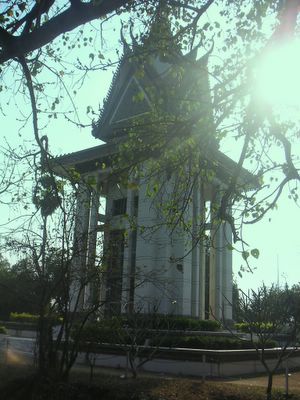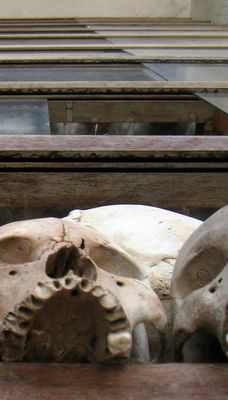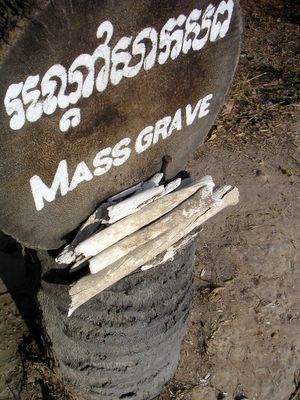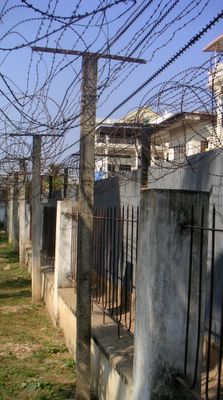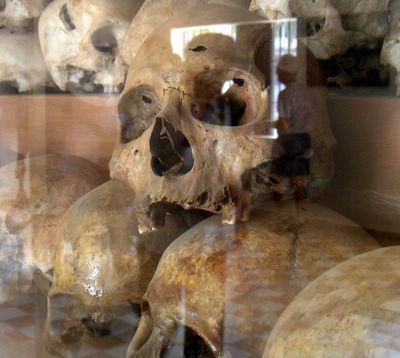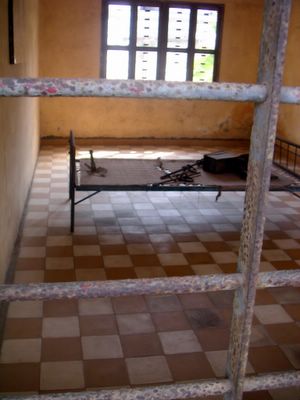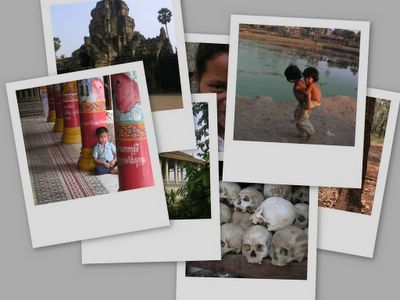As a point for future reference, the trip's proposed itinerary from Intrepid Travel is included below. Consider it an exercise in project planning. Despite the best laid plans, circumstance will often push reality in unexpected ways.
The other reason for documenting the intended itinerary is to help us keep track as to "when" and "where" events actually occurred. It'll be a handy reference point for us in the coming months when posting photos and blog entries about our two weeks abroad.
Days 1-2: [Sat, Sun Jan 29, 30] Phnom Penh - You and your fellow travellers will be arriving at all times from around the world today [except we actually flew in the day prior], so there are no arranged activities. Your leader will organise a pre-trip meeting for the early evening. This will be followed by an optional group dinner. Look for a welcome note at reception in the joining point hotel explaining where to meet. For those who arrive early, there is sightseeing information on the Intrepid noticeboard in reception. Note that hotel check-in time is 12 noon. Phnom Penh, Cambodia's capital city, is set on a major junction of the Mekong and Tonle Sap Rivers and boasts some fine examples of French-inspired architecture. We visit the chilling Toul Sleng torture centre and the 'killing fields' of Choeung Ek. We will also have free time to explore the Silver Pagoda, the Royal Palace, the bat-infested National Museum or the Russian Market. Sisowath Quay, along the riverside, boasts some beautiful old French architecture, a variety of cuisine and coffee shops and a great view of the bustling river and street traffic.
Days 3-4: [Mon Jan 31, Tue Feb 1] Kompong Cham / Kompong Thom - A short bus ride takes us to Kampong Cham (approx. 2 hours) where we overnight. We visit Wat Nokor, an 11th century Buddhist shrine, and there are riverside walks you can take to explore the area. Alternatively, relax down by the Mekong with a cold drink or watch the sunset from the new Japanese Friendship bridge. It's time to experience road travel as we catch a bus to Kampong Thom. On the way, we make a quick stop at the town of Skoun for an opportunity to sample the local delicacy of fried spiders. We then go on to Phom Suntok - a unique mountain temple full of carved reclining Buddhas - a mere 956 steps to the top but worth it for the great views over the surrounding countryside. Strung out along the banks of the Stung Sen river, Kampong Thom is a rather sleepy town. In the late afternoon we drive out to Sambor Prey Kok, a 7th century temple.
Days 5-7: [Wed, Thur Feb 2, 3] Angkor Wat - A long drive takes us to Siem Reap (approx. 5 hours), where according to group wishes, we may head straight out to the temples or perhaps take time out to explore this relaxed town. It's sunrise to sunset on day 6 as we make the most of our visit to the world famous Angkor complex with our local guide. These temples were built between the 9th and 13th centuries when the Khmer Empire was the pre-eminent influence in South-East Asia. They are believed to represent the cosmic world; set in perfect balance, symmetry and composition. Scattered over an area of some 160 sq km, the main cluster of temples is close to Siem Reap and we have plenty of time to explore the great archeological sites of Angkor Wat, the Bayon and the jungle-covered Ta Phrom. The intricately carved bas-reliefs and architecural design are mind blowing and there are spectacular photographic opportunities at sunrise.
Days 8-9: [Fri, Sat Feb 4, 5] Battambang - An early morning boat ride (approx 4-5 hours) takes us along the river to Battambang. Cambodia's second largest city is an attractive riverside town with traces of French elegance, friendly Khmer people and well preserved colonial architecture. There is time to explore the town and to enjoy the relaxed atmosphere. We take a trip to Phnom Sampeau where you can climb to the hilltop temple and see the remains of Khmer Rouge victims from a 'killing field' located in two caves. There are other Angkorian temples in the area that can be visited if you wish. (If water levels are too low, a bus will be used to Battambang).
Days 10-11: [Sun, Mon Feb 6, 7] Kampot - Leaving Battambang, we take a boat or bus (depending on weather conditions and season) where we transfer to a bus for the four hour drive to Kampot. The morning of day 10 we drive up to Bokor National Park (approx. 2 hours). If the season is right we can stop for a refreshing dip in the waterfalls. Bokor is an old French hill resort with a casino, was King Sihanouk's summer palace and offers some great views over Cambodia's southern coastline. We return to Kampot to spend the night and there is time to explore the town before we head off on day 12 to Sihanoukville.
Days 12-13: [Tue, Wed Feb 8, 9] Sihanoukville - Miles of untouched beaches and wonderfully friendly people await us in this new coastal resort, named for Cambodia's king. Weather permitting, we take a boat trip to one of the nearby islands where we are free to relax amongst swaying palms, white sands and blue waters. There is also plenty of time to explore the town, the market, the pagodas and the view from Sihanoukville's surrounding hills.
Days 14-15: [Thur, Fri Feb 10, 11] Phnom Penh - A bus ride returns us to Cambodia's capital city by mid day (approx. 4 hours), leaving the afternoon free for further exploration or maybe some last minute shopping. As no activities are planned for day 15 you may leave at any time.
